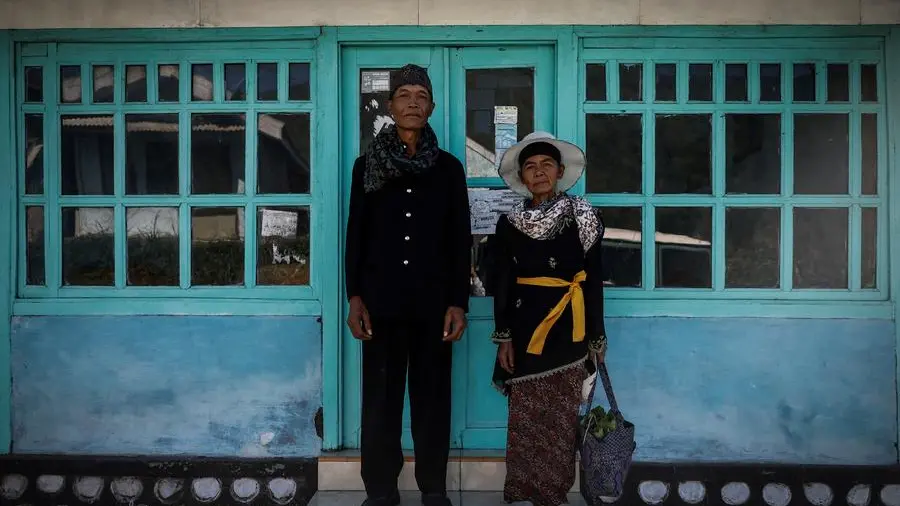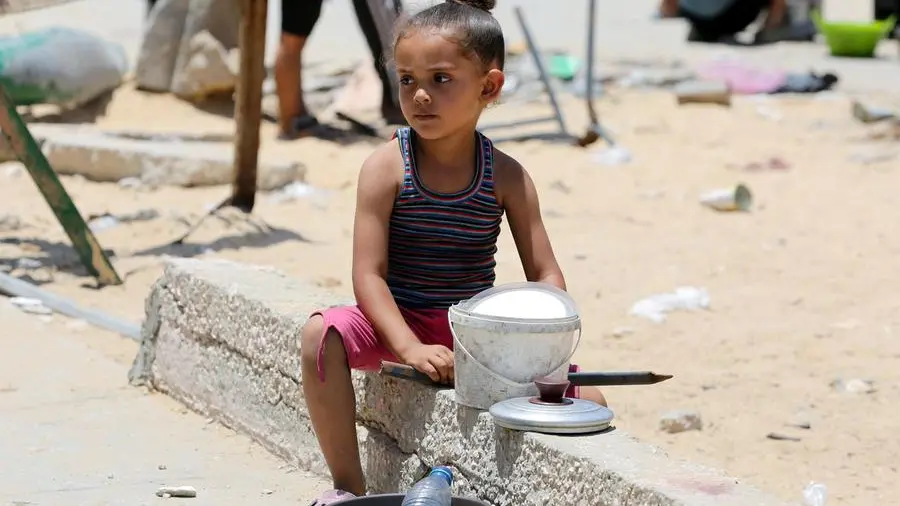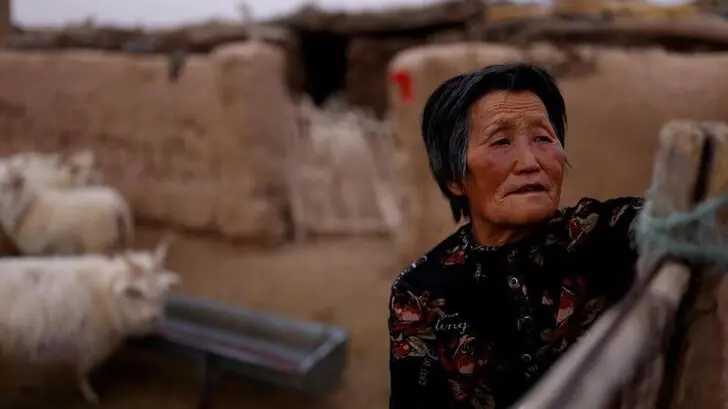
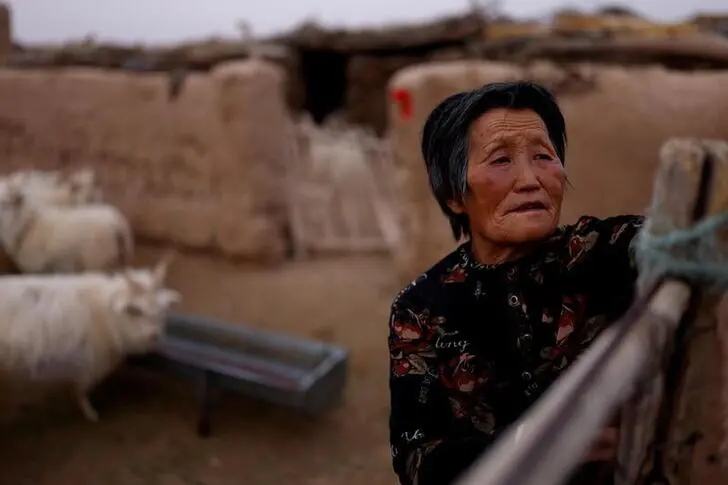
Ding Yinhua, 69, a shepherd, opens the gate of a pen for sheep and goats at her house in the Gobi desert in Minqin county, Wuwei, Gansu province, China, April 18, 2021. Tree-planting has been at the heart of China's environmental efforts for decades as the country seeks to turn barren deserts and marshes near its borders into farmland but some of the farmers in Wuwei have begun to lose hope after decades trying to subdue the deserts. Despite the tree-planting, pastures have deteriorated in recent years as a result of declining rainfall in the spring and summer, Ding said. "It's just no good without rain. We don't have land so there's no other way: we just herd sheep. In 2015 and 2016, there was rain but since then there's been nothing, and you now have to wait until September," she said. REUTERS/Carlos Garcia Rawlins
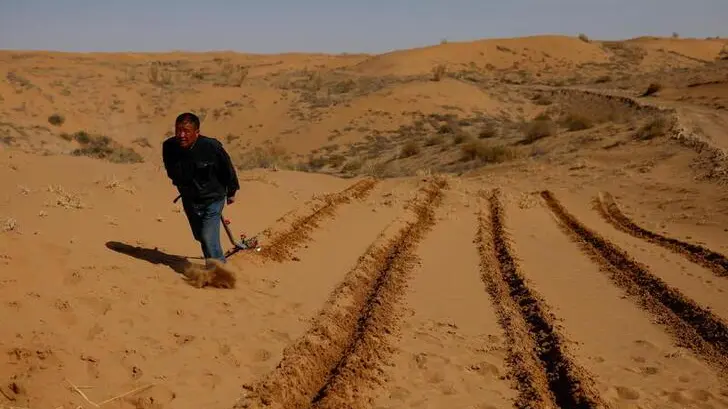
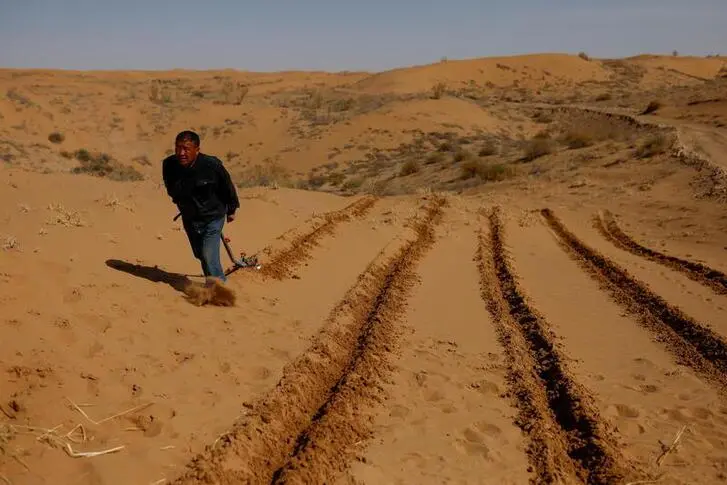
Wang Yinji, 53, plows the ground before planting straw to prevent sand movement, a practice known as "holding down the sand", during a voluntary tree-planting event organised by Yinji's family, on the edge of the Gobi desert on the outskirts of Wuwei, Gansu province, China, April 16, 2021. "The more the forest expands, the more it eats into the sands, the better it is for us," said Wang. REUTERS/Carlos Garcia Rawlins
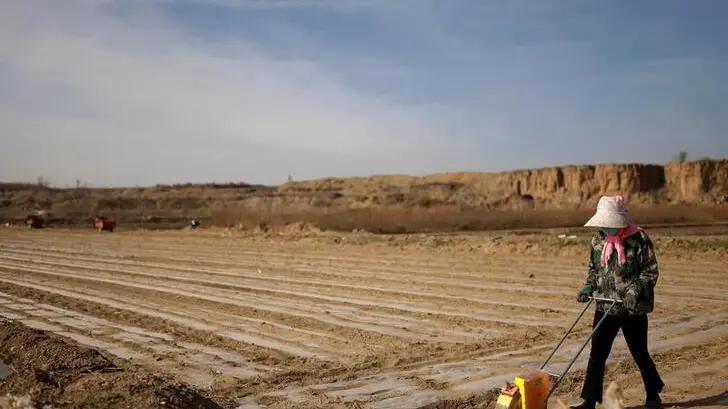
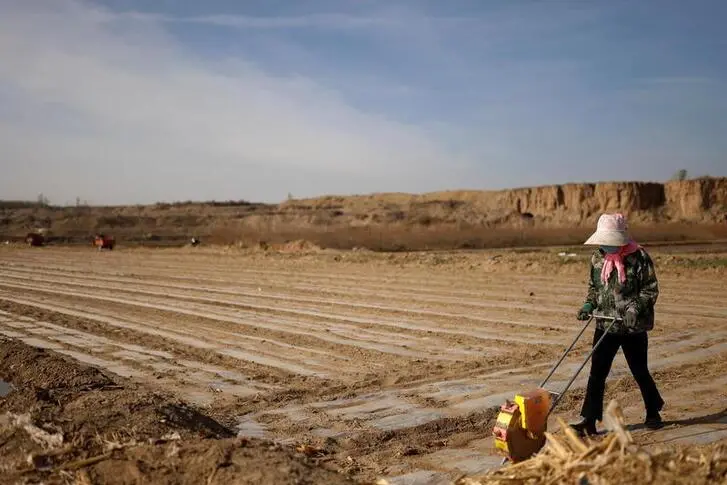
A worker uses a planter to plant corn seeds on Wang Yinji's land in a village near the edge of the Gobi desert on the outskirts of Wuwei, Gansu province, China, April 14, 2021. REUTERS/Carlos Garcia Rawlins
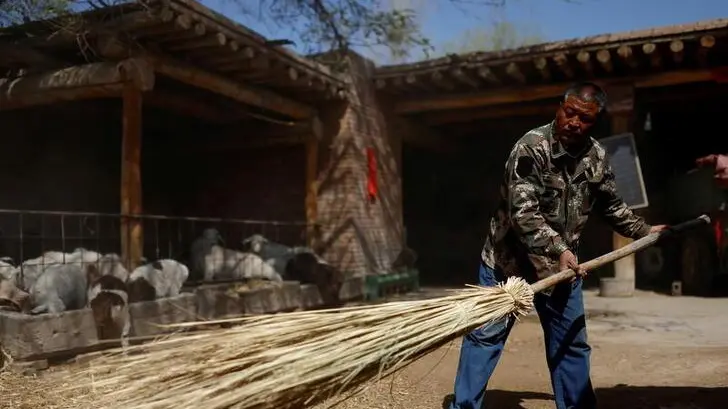
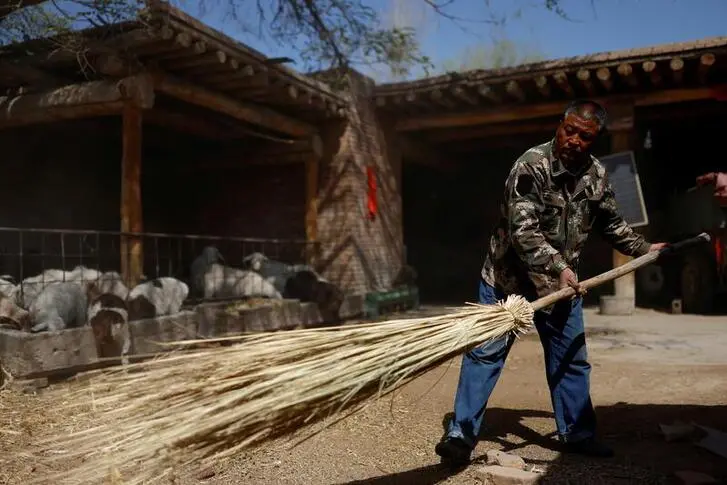
Wang Yinji, 53, cleans the backyard of his house in a village near the edge of the Gobi desert, on the outskirts of Wuwei, Gansu province, China, April 14, 2021. "After 1999, when the tree-planting sped up, things got much better," said Wang. "Our corn grew taller. The sand that used to blow in from the east and northeast was stopped." REUTERS/Carlos Garcia Rawlins

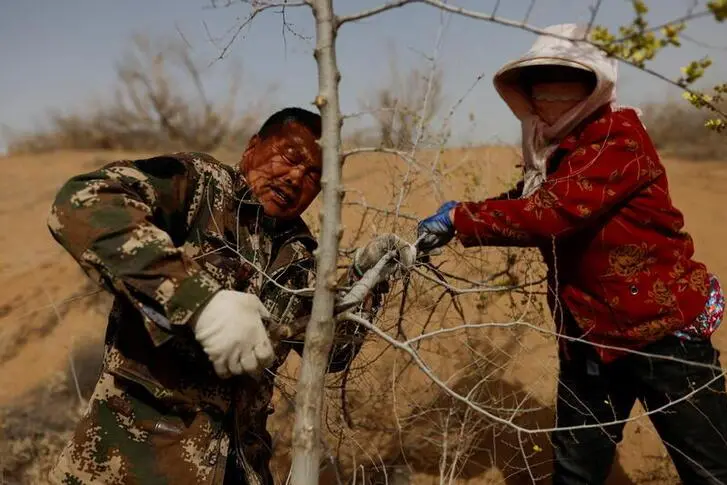
Wang Yinji, 53, and his wife, Jin Yuxiu, trim a tree planted on the edge of the Gobi desert on the outskirts of Wuwei, Gansu province, China, April 15, 2021. "After 1999, when the tree-planting sped up, things got much better," said Yinji. "Our corn grew taller. The sand that used to blow in from the east and northeast was stopped." REUTERS/Carlos Garcia Rawlins
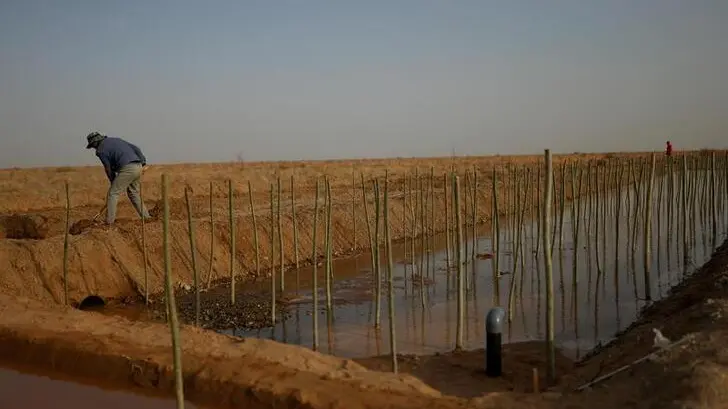
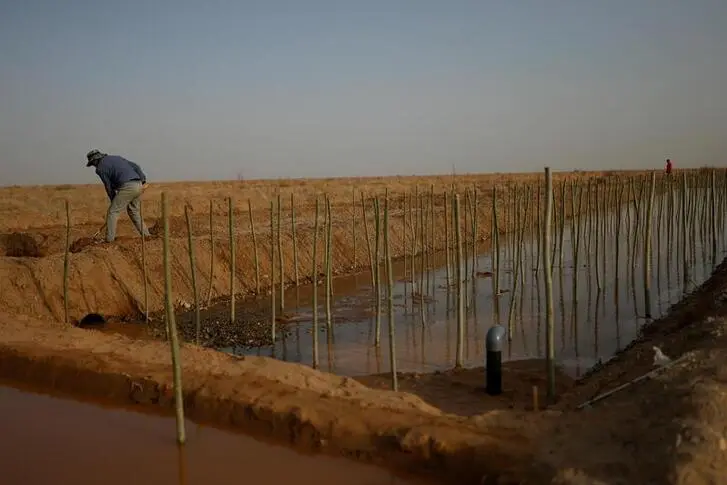
A worker shovels soil next to irrigation channels and recently planted shoots of Xinjiang poplar at the Yangguan state-backed forest farm, on the edge of the Gobi desert on the outskirts of Dunhuang, Gansu province, China, April 13, 2021. The Yangguan project, designed to repair the region's overworked ecosystem, has proven controversial. In March, a government investigation team found Yangguan had violated regulations by allowing vineyards to be planted in protected forest. Villagers were also accused of illegally felling trees. REUTERS/Carlos Garcia Rawlins
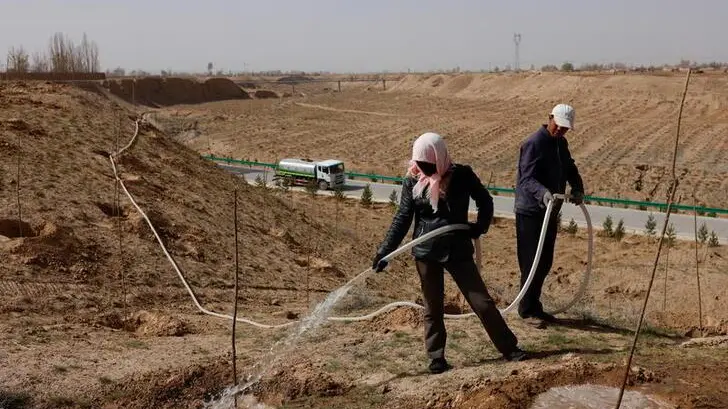
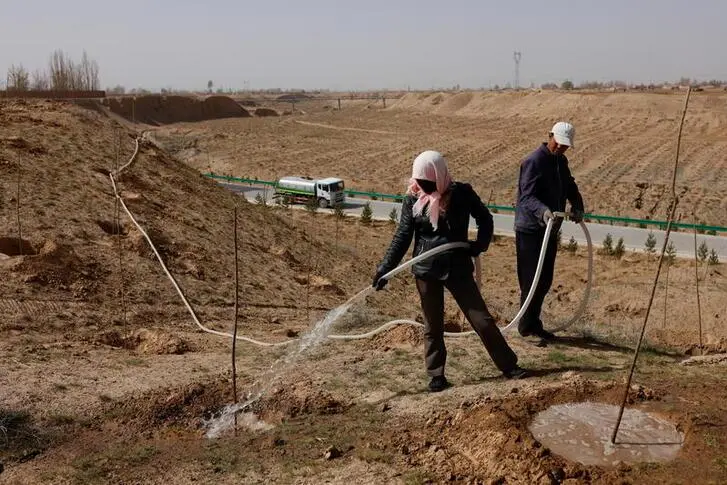
Workers water recently planted trees outside a village near the edge of the Gobi desert on the outskirts of Wuwei, Gansu province, China, April 15, 2021. Tree-planting has been at the heart of China's environmental efforts for decades as the country seeks to turn barren deserts and marshes near its borders into farmland. REUTERS/Carlos Garcia Rawlins
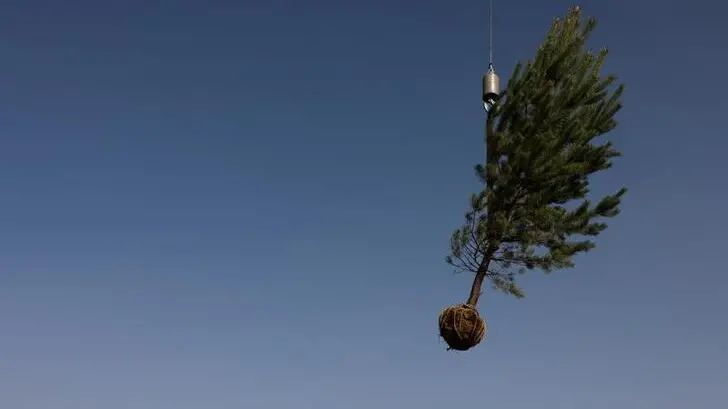
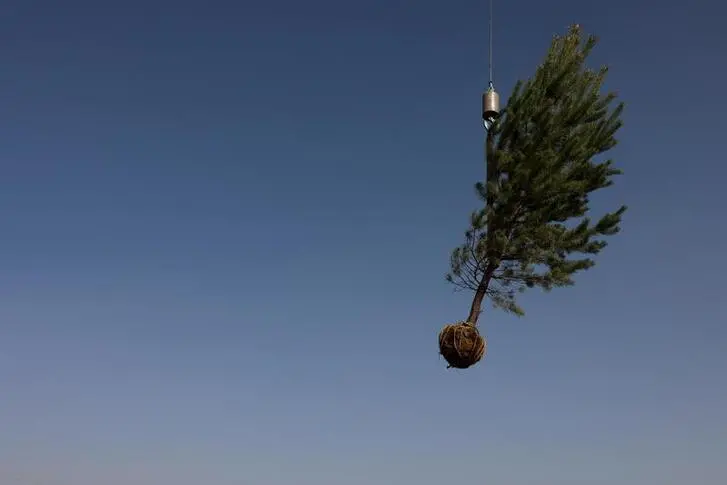
A tree is lifted with a crane before being placed on a truck at Toudunying state-owned commercial forest estate in a village near the edge of the Gobi desert, on the outskirts of Wuwei, Gansu province, China, April 16, 2021. Over the last four decades, the Three-North Shelter Forest Programme tree-planting scheme, known colloquially as the "Great Green Wall", has helped raise total forest coverage to nearly a quarter of China's total area, up from less than 10% in 1949. In Hongshui trees have become a major part of the local economy and the area is dominated by a large state-owned commercial forest estate called Toudunying. REUTERS/Carlos Garcia Rawlins
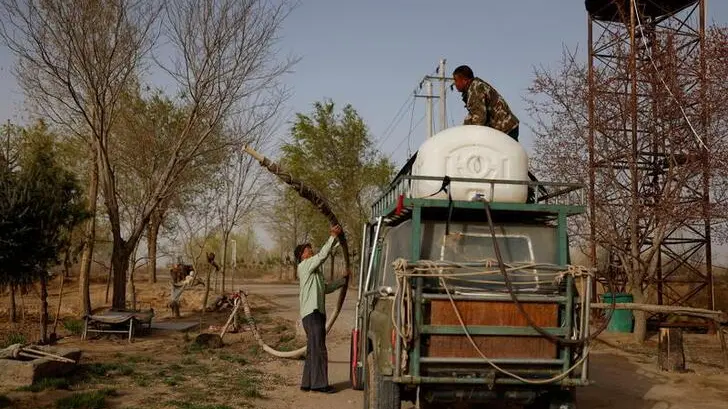
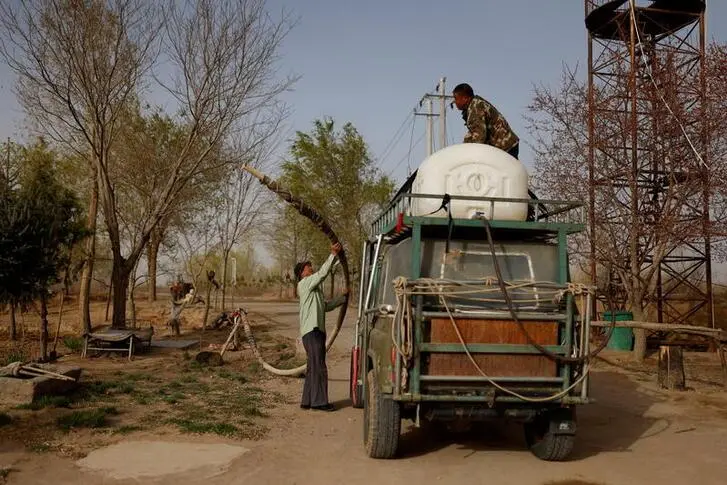
Wang Tianchang, 78, a veteran of China's decades-long state campaign to "open up the wilderness", helps his son Wang Yinji fill a water tank on the roof of their four-by-four, before driving into the desert to plant trees, at his house on the edge of the Gobi desert on the outskirts of Wuwei, Gansu province, China, April 15, 2021. "The more the forest expands, the more it eats into the sands, the better it is for us," said Wang Yinji. REUTERS/Carlos Garcia Rawlins
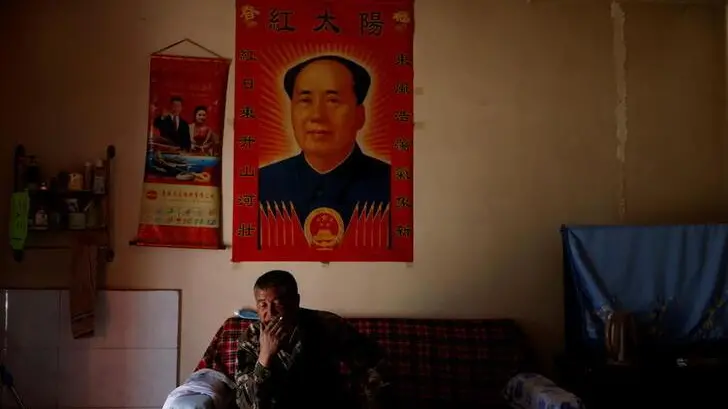
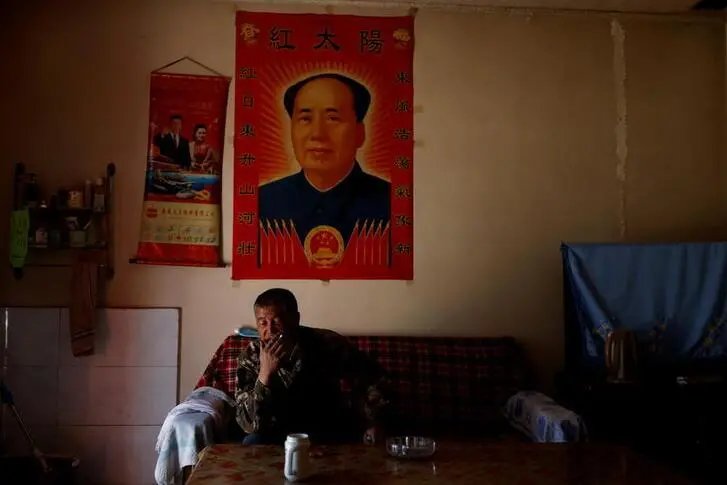
Wang Yinji, 53, sits in front of posters of late Chinese chairman Mao Zedong and Chinese President Xi Jinping and his wife Peng Liyuan, while smoking at his house in a village near the edge of the Gobi desert on the outskirts of Wuwei, Gansu province, China, April 14, 2021. "After 1999, when the tree-planting sped up, things got much better," said Wang. "Our corn grew taller. The sand that used to blow in from the east and northeast was stopped." REUTERS/Carlos Garcia Rawlins
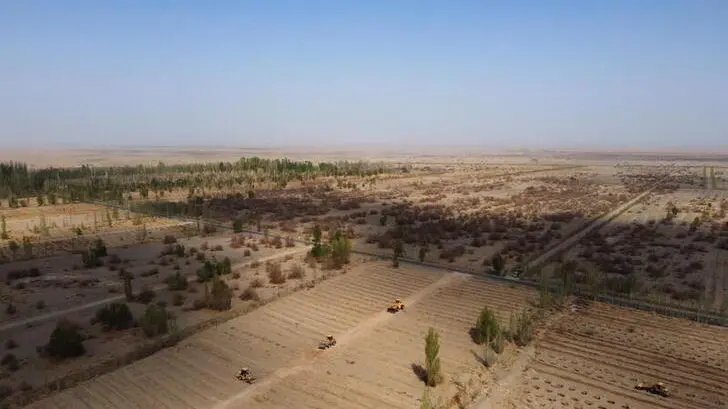
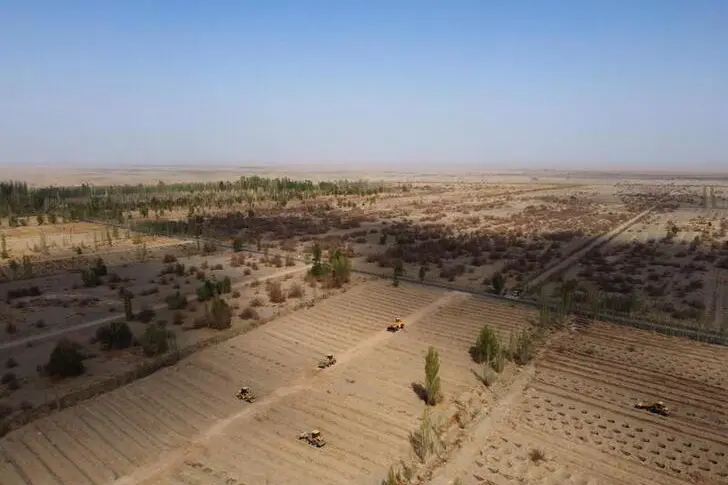
Wheel loaders move soil to prepare a field for tree planting, at one of the sections of the Yangguan state-backed forest farm, on the edge of the Gobi desert, on the outskirts of Dunhuang, Gansu province, China, April 13, 2021. Picture taken with a drone. The Yangguan project, designed to repair the region's overworked ecosystem, has proven controversial. In March, a government investigation team found Yangguan had violated regulations by allowing vineyards to be planted in protected forest. Villagers were also accused of illegally felling trees. REUTERS/Carlos Garcia Rawlins

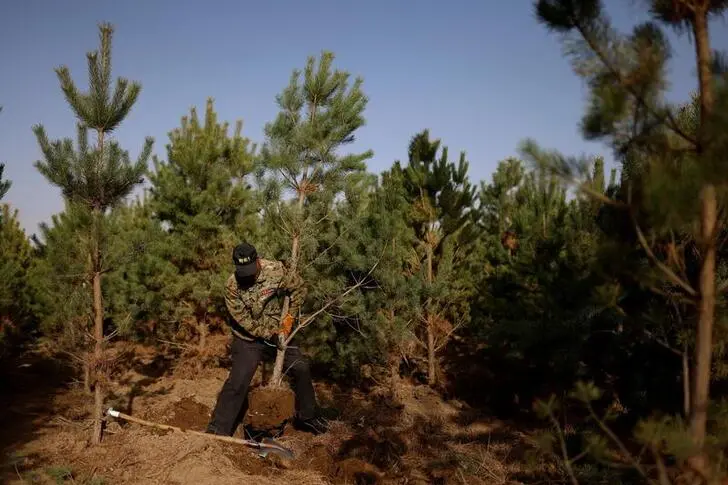
A worker lifts a tree from the ground at the Toudunying state-owned commercial forest estate in a village near the edge of the Gobi desert, on the outskirts of Wuwei, Gansu province, China, April 16, 2021. Over the last four decades, the Three-North Shelter Forest Programme tree-planting scheme, known colloquially as the "Great Green Wall", has helped raise total forest coverage to nearly a quarter of China's total area, up from less than 10% in 1949. In Hongshui trees have become a major part of the local economy and the area is dominated by a large state-owned commercial forest estate called Toudunying. REUTERS/Carlos Garcia Rawlins
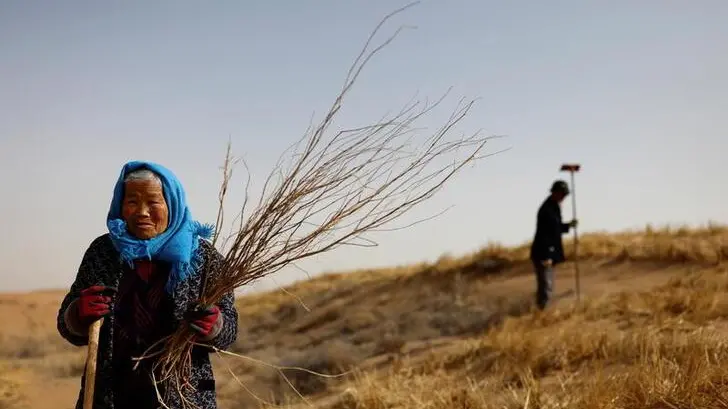
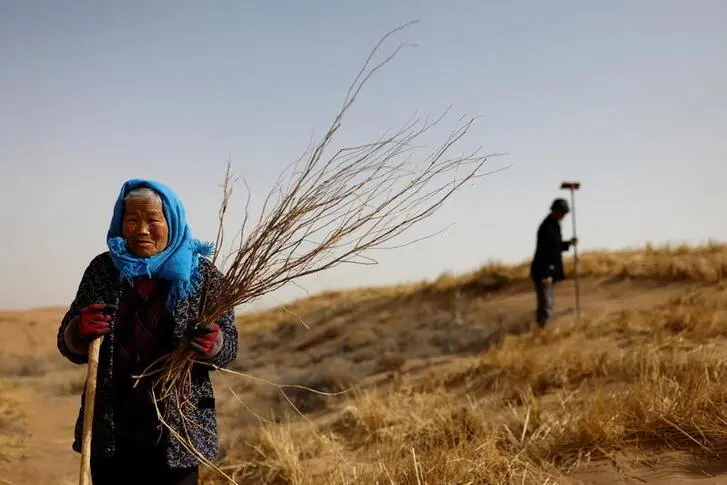
Li Lanying, poses for a picture with shoots of Huabang, a yellow flowering bush known as the "sweetvetch", as she plants them with her family on edge of the Gobi desert on the outskirts of Wuwei, Gansu province, China, April 15, 2021. Tree-planting has been at the heart of China's environmental efforts for decades as the country seeks to turn barren deserts and marshes near its borders into farmland. The flowering bush known as the sweetvetch has an 80% success rate even in harsh desert conditions and has become a key part of efforts to "hold down the sand". REUTERS/Carlos Garcia Rawlins
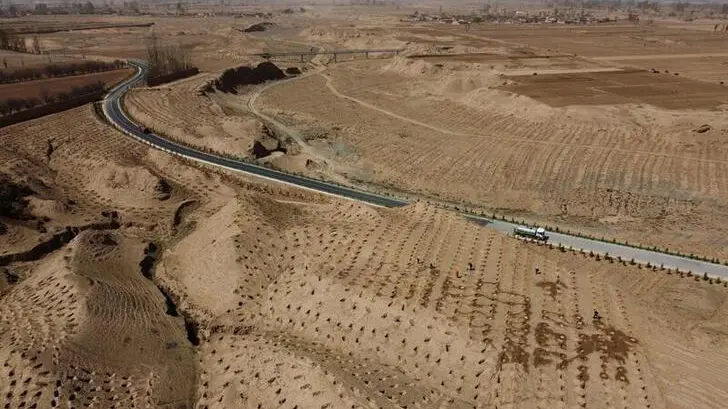
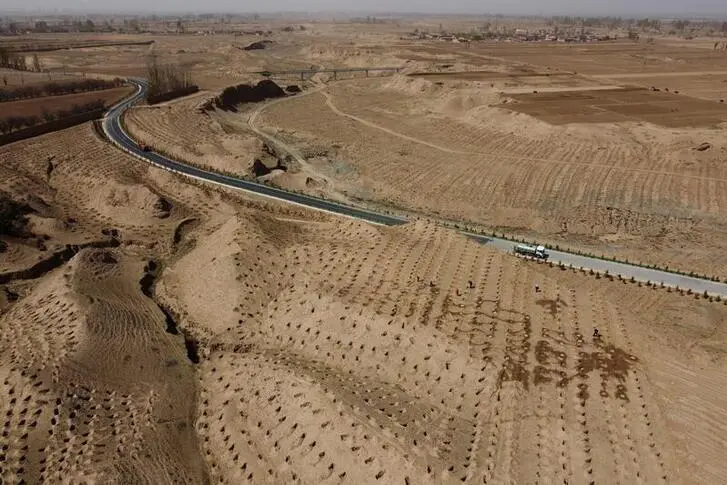
Workers water recently planted trees outside a village near the edge of the Gobi desert on the outskirts of Wuwei, Gansu province, China, April 15, 2021. Picture taken with a drone. Tree-planting has been at the heart of China's environmental efforts for decades as the country seeks to turn barren deserts and marshes near its borders into farmland with plans to increase total forest coverage from 23% last year to 24.1% by 2025. REUTERS/Carlos Garcia Rawlins
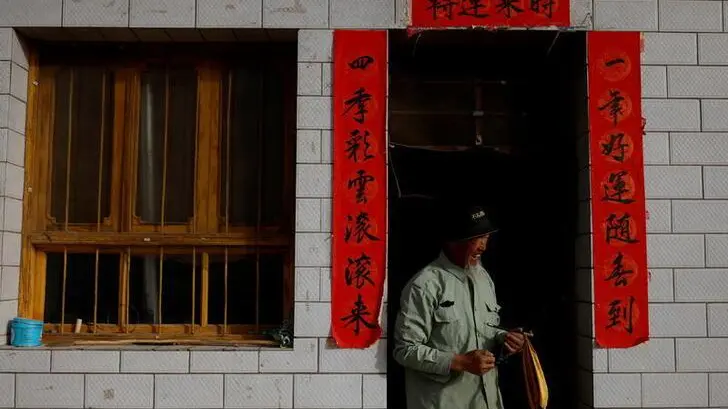
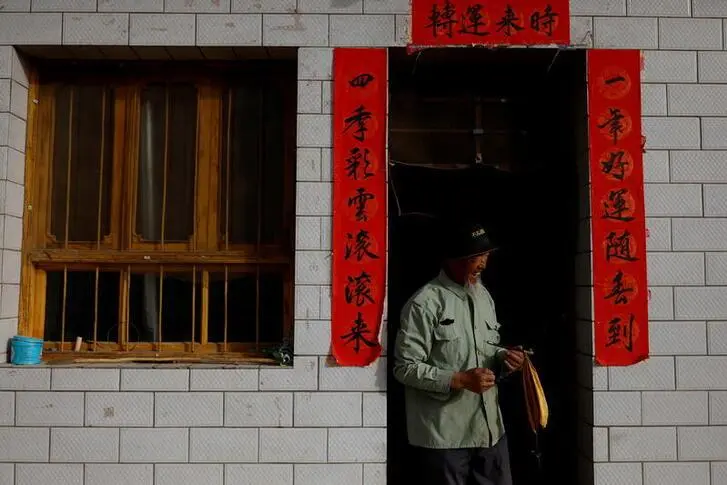
Wang Tianchang, 78, a veteran of China's decades-long state campaign to "open up the wilderness", prepares to light up his pipe at his house on the edge of the Gobi desert, on the outskirts of Wuwei, Gansu province, China, April 15, 2021. "If you want to fight the desert, there's no need to be afraid," sung Wang. REUTERS/Carlos Garcia Rawlins
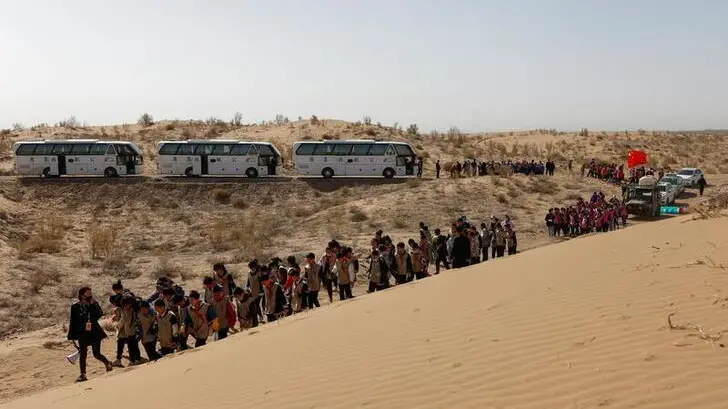

Children walk next to a sand dune during a voluntary tree-planting event organised by their school and the Wang family, on the edge of the Gobi desert, on the outskirts of Wuwei, Gansu province, China, April 16, 2021. Tree-planting has been at the heart of China's environmental efforts for decades as the country seeks to turn barren deserts and marshes near its borders into farmland. Experts say China's reforestation work has become more sophisticated over the years with the government benefiting from decades of experience and able to mobilise thousands of volunteers to plant trees, emulating frontline pioneers like the Wangs. REUTERS/Carlos Garcia Rawlins
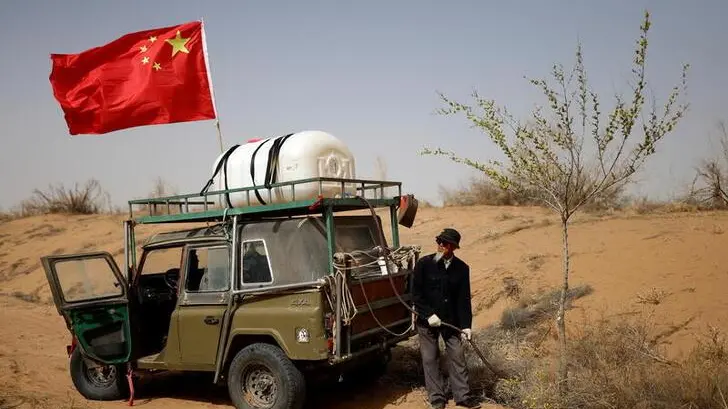
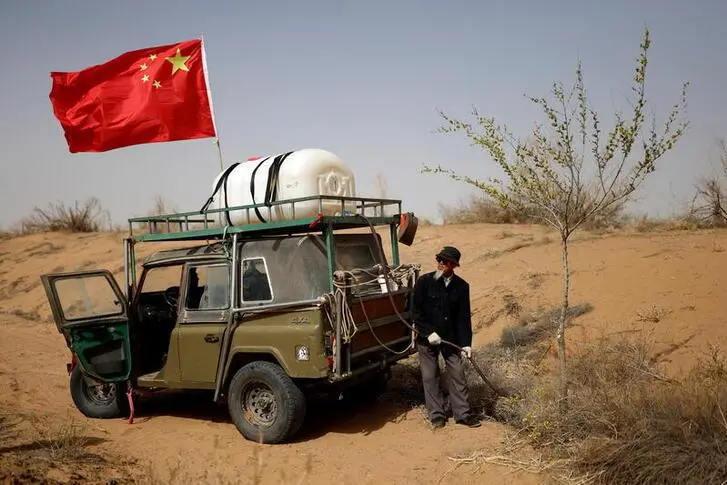
Wang Tianchang, 78, waters a tree planted on the edge of the Gobi desert on the outskirts of Wuwei, Gansu province, China, April 15, 2021. The Wangs have been fighting desertification since they settled on barren land near the village of Hongshui in Wuwei, a city in Gansu close to the border with Inner Mongolia, in 1980. A local institution in northwest China's Gansu province, Wang and his family lead busloads of young volunteers from the provincial capital of Lanzhou into the desert each year to plant and irrigate new trees and bushes. REUTERS/Carlos Garcia Rawlins

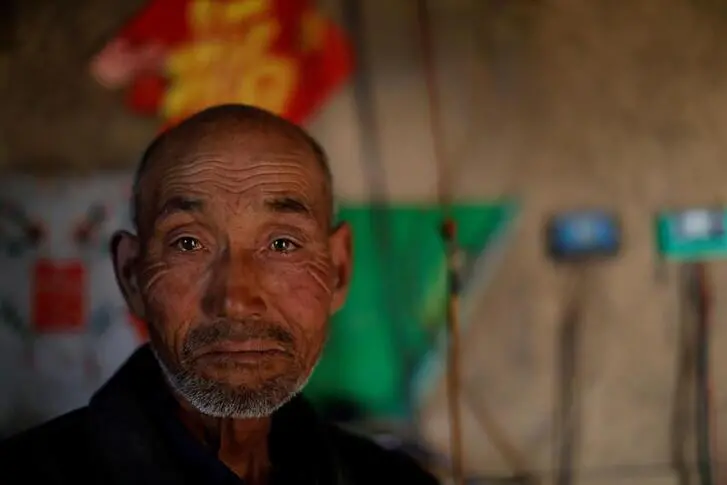
Li Youfu, 71, a shepherd, poses for a picture at his house in the Gobi desert in Minqin county, Wuwei, Gansu province, China, April 18, 2021. Tree-planting has been at the heart of China's environmental efforts for decades as the country seeks to turn barren deserts and marshes near its borders into farmland. Li said he thought tree-planting had made no difference at all. "The sand is still moving. This can't be controlled," he said. "When the wind comes, it's usually really strong. No one can stop it." REUTERS/Carlos Garcia Rawlins

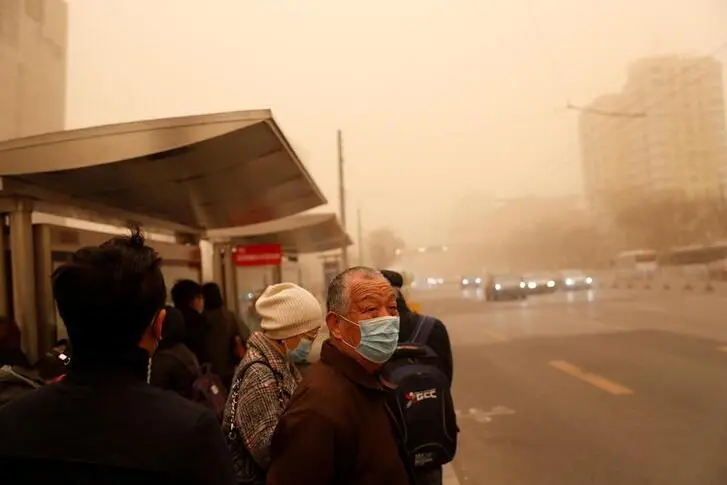
People wait for transportation at a bus stop as the city is hit by a sandstorm, in Beijing, China, March 15, 2021. In March, heavy sandstorms hit Beijing for the first time in six years, putting the country's reforestation efforts under scrutiny, with land increasingly scarce and trees no longer able to offset the impact of climate change. REUTERS/Carlos Garcia Rawlins. Image used for illustrative purpose
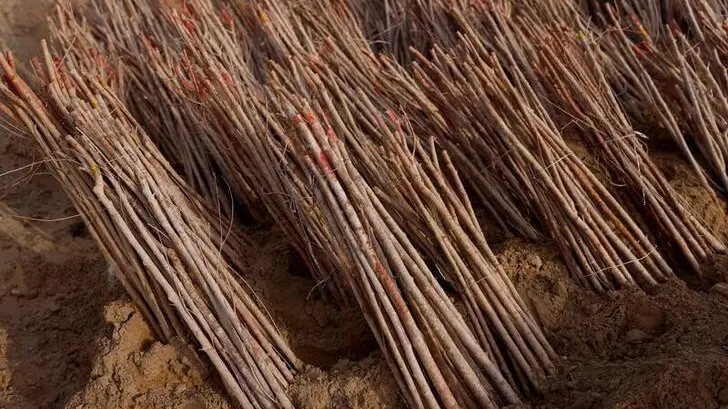

Piled tree shoots lay on the ground waiting to be planted, at the Yangguan state-backed forest farm, on the edge of the Gobi desert on the outskirts of Dunhuang, Gansu province, China, April 13, 2021. The Yangguan project, designed to repair the region's overworked ecosystem, has proven controversial. In March, a government investigation team found Yangguan had violated regulations by allowing vineyards to be planted in protected forest. Villagers were also accused of illegally felling trees. REUTERS/Carlos Garcia Rawlins
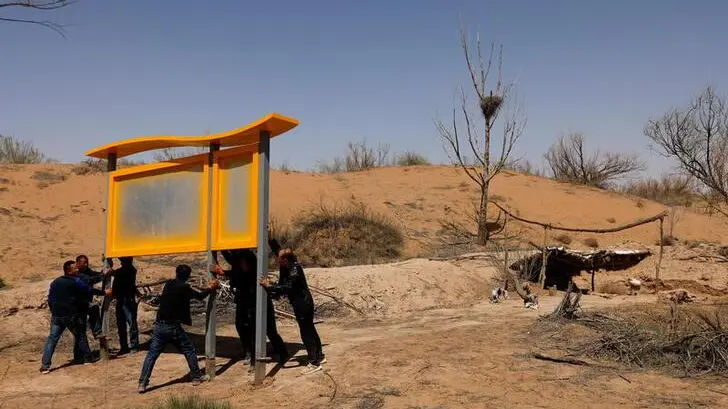
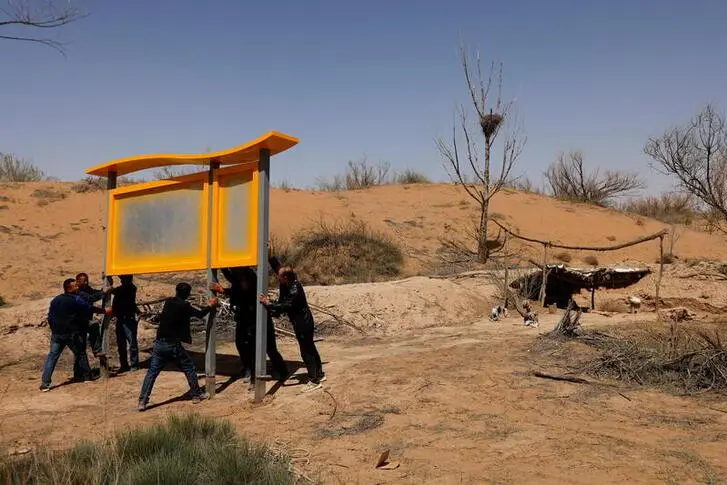
Wang Yinji, 53, helps to install an information billboard outside the house where he used to live with his family on the edge of the Gobi desert, on the outskirts of Wuwei, Gansu province, China, April 16, 2021. The family's painstaking work to rehabilitate marginal land has been promoted as an inspiration for the rest of the country, and they are the subject of government propaganda posters celebrating their role in holding back the sand. REUTERS/Carlos Garcia Rawlins

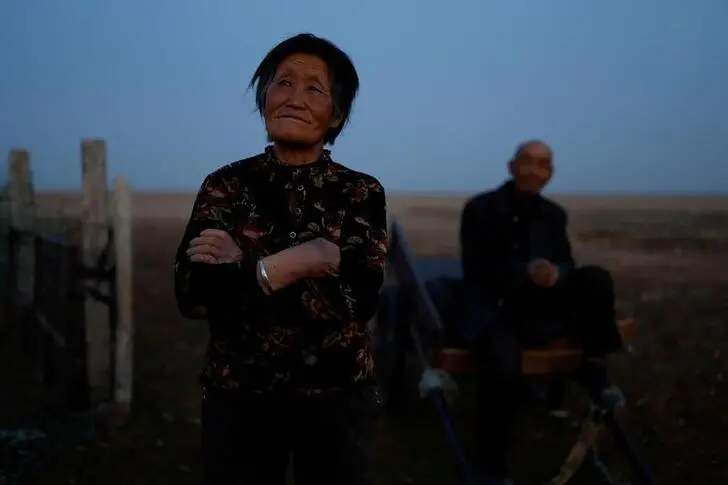
Shepherds Ding Yinhua, 69, and her husband Li Youfu, 71, pose for a picture outside their house in the Gobi desert in Minqin county, Wuwei, Gansu province, China, April 17, 2021. Tree-planting has been at the heart of China's environmental efforts for decades as the country seeks to turn barren deserts and marshes near its borders into farmland. Li said he thought tree-planting had made no difference at all. "The sand is still moving. This can't be controlled," he said. "When the wind comes, it's usually really strong. No one can stop it." REUTERS/Carlos Garcia Rawlins

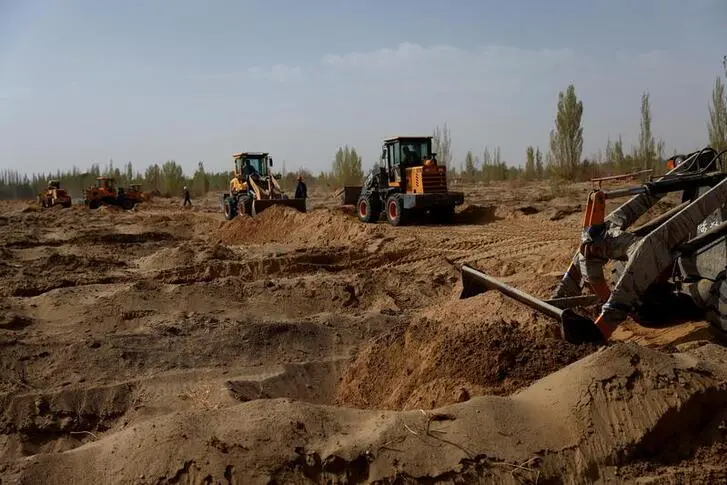
Wheel loaders move soil to prepare a field for tree planting, at one of the sections of the Yangguan state-backed forest farm, on the edge of the Gobi desert on the outskirts of Dunhuang, Gansu province, China, April 13, 2021. One such state-backed forest farm designed to repair the region's overworked ecosystem is the 4,200-acre Yangguan project, on the outskirts of the city of Dunhuang, which has proven controversial. Leaseholders eager to plant lucrative but water-intensive grapes levelled large sections of forest in 2017. In March, a government investigation team found Yangguan had violated regulations by allowing vineyards to be planted in protected forest. Villagers were also accused of illegally felling trees, and authorities were ordered to reclaim the illegally occupied land. Officials on the estate said hundreds of staff from government agencies in Dunhuang would arrive soon with the aim of planting 31,000 trees on 93 acres of land in just four days. Gradually the surviving vineyards would be replaced with trees, a manager said, a move that would affect hundreds of farmers. REUTERS/Carlos Garcia Rawlins

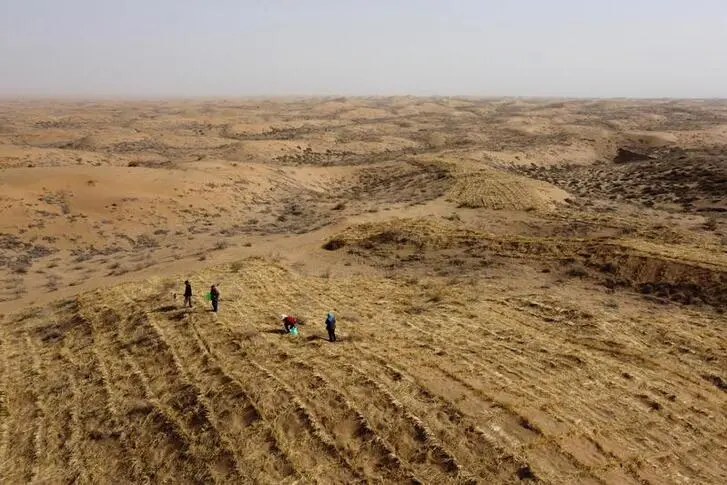
Wang Tianchang, 78, and his family walk through square grids of grass and bushes planted by hand to prevent sand movement, a practice known as "holding down the sand", while planting Huabang, a yellow flowering bush known as the "sweetvetch", on the edge of the Gobi desert on the outskirts of Wuwei, Gansu province, China, April 15, 2021. Picture taken with a drone. Tree-planting has been at the heart of China's environmental efforts for decades as the country seeks to turn barren deserts and marshes near its borders into farmland. The flowering bush known as the sweetvetch has an 80% success rate even in harsh desert conditions and has become a key part of efforts to "hold down the sand". REUTERS/Carlos Garcia Rawlins
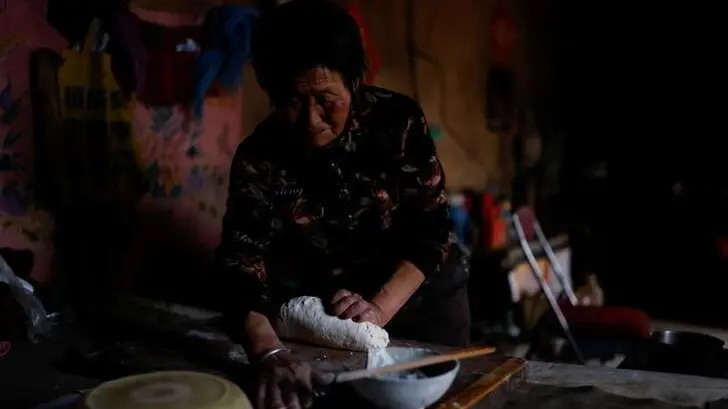
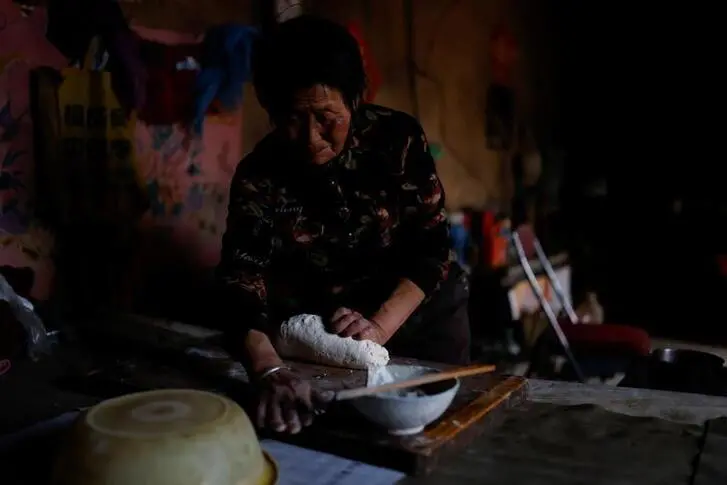
Ding Yinhua, 69, a shepherd, kneads dough for next day noodles at her house, in the Gobi desert in Minqin county, Wuwei, Gansu province, China, April 18, 2021. Tree-planting has been at the heart of China's environmental efforts for decades as the country seeks to turn barren deserts and marshes near its borders into farmland but some of the farmers in Wuwei have begun to lose hope after decades trying to subdue the deserts. Despite the tree-planting, pastures have deteriorated in recent years as a result of declining rainfall in the spring and summer, Ding said. "It's just no good without rain. We don't have land so there's no other way: we just herd sheep. In 2015 and 2016, there was rain but since then there's been nothing, and you now have to wait until September," she said. REUTERS/Carlos Garcia Rawlins
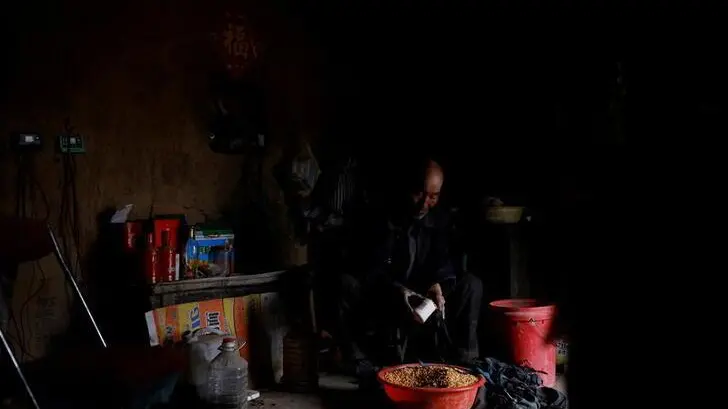
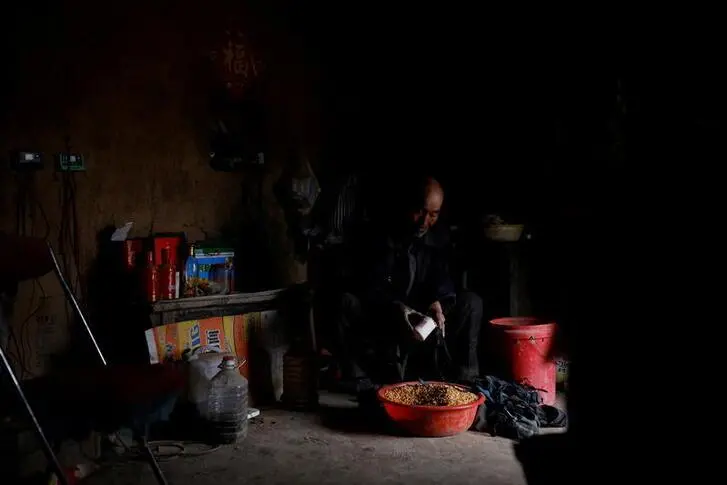
Li Youfu, 71, a shepherd, splits corn grains into cloth bags to feed his flock, at his house in the Gobi desert in Minqin county, Wuwei, Gansu province, China, April 18, 2021. Tree-planting has been at the heart of China's environmental efforts for decades as the country seeks to turn barren deserts and marshes near its borders into farmland. Li said he thought tree-planting had made no difference at all. "The sand is still moving. This can't be controlled," he said. "When the wind comes, it's usually really strong. No one can stop it." REUTERS/Carlos Garcia Rawlins
The Great Green Wall: China's farmers push back the desert one tree at a time





